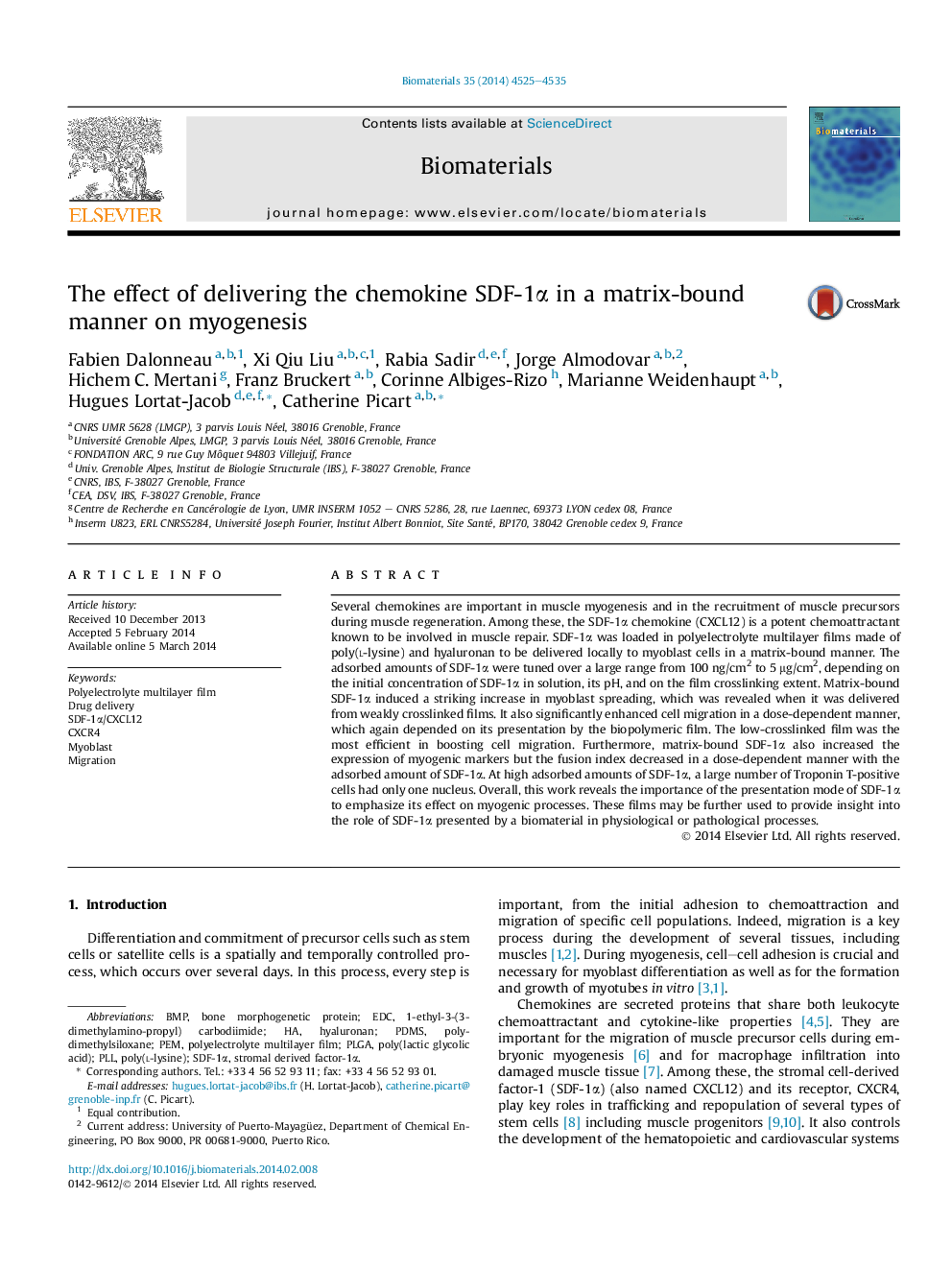| Article ID | Journal | Published Year | Pages | File Type |
|---|---|---|---|---|
| 5846 | Biomaterials | 2014 | 11 Pages |
Several chemokines are important in muscle myogenesis and in the recruitment of muscle precursors during muscle regeneration. Among these, the SDF-1α chemokine (CXCL12) is a potent chemoattractant known to be involved in muscle repair. SDF-1α was loaded in polyelectrolyte multilayer films made of poly(l-lysine) and hyaluronan to be delivered locally to myoblast cells in a matrix-bound manner. The adsorbed amounts of SDF-1α were tuned over a large range from 100 ng/cm2 to 5 μg/cm2, depending on the initial concentration of SDF-1α in solution, its pH, and on the film crosslinking extent. Matrix-bound SDF-1α induced a striking increase in myoblast spreading, which was revealed when it was delivered from weakly crosslinked films. It also significantly enhanced cell migration in a dose-dependent manner, which again depended on its presentation by the biopolymeric film. The low-crosslinked film was the most efficient in boosting cell migration. Furthermore, matrix-bound SDF-1α also increased the expression of myogenic markers but the fusion index decreased in a dose-dependent manner with the adsorbed amount of SDF-1α. At high adsorbed amounts of SDF-1α, a large number of Troponin T-positive cells had only one nucleus. Overall, this work reveals the importance of the presentation mode of SDF-1α to emphasize its effect on myogenic processes. These films may be further used to provide insight into the role of SDF-1α presented by a biomaterial in physiological or pathological processes.
